
by Rebecca Sciullo | Jan 4, 2024 | Planning
Did you set some goals for your art business for 2024?
Setting goals is crucial to success in any business, including with an art business. In Charting Your Art Business Progress we talked about setting SMART goals. SMART stands for Specific, Measurable, Achievable, Relevant, and Time-based. Applying these principles can significantly enhance the effective use of goal-setting.
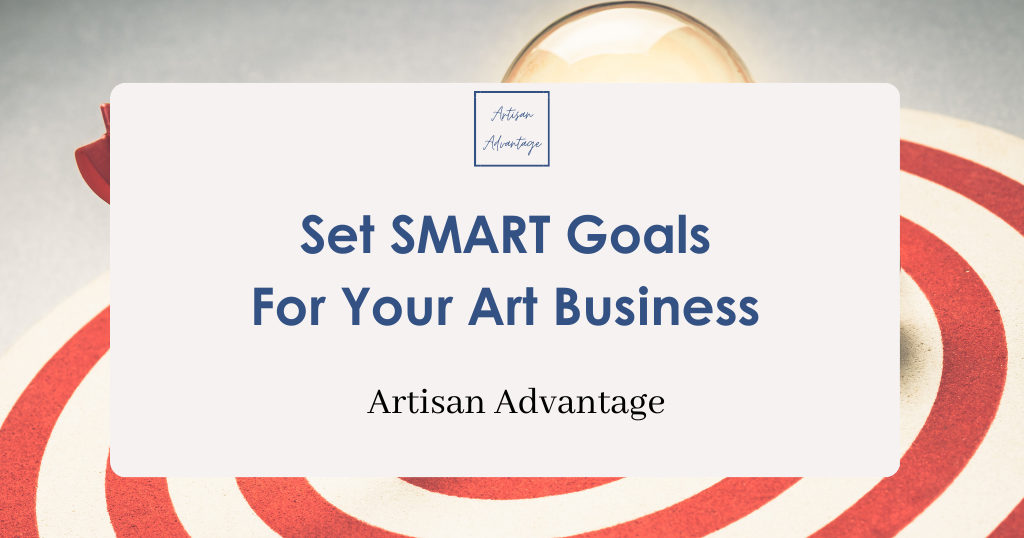
Specific
Instead of a vague aim like “sell more artwork,” a specific goal could be “increase monthly art sales by 25%.”
Measurable
Measurability involves quantifying your objectives, such as tracking the number of artworks sold, the revenue generated, or increased social media engagement.
Achievable
Achievability is vital to prevent setting unrealistic goals that might discourage you in the long run. While aiming high is admirable, set challenging yet feasible goals within your resources and capabilities.
Relevant
Relevance ensures that your goals align with your art business’s vision and mission. They should contribute to its growth and success.
Time
Time-based goals have a set deadline, creating a sense of urgency and accountability. For instance, setting a goal to “launch a new collection in four months” provides a clear timeframe.
Make all of Your Goals for Your Art Business SMART Goals
In an art business, SMART goals could include increasing online presence, expanding into new markets, enhancing customer engagement, or refining artistic skills.
By implementing SMART criteria, you can establish clear objectives, track progress effectively, and move your business toward growth and success.
Get help with your 2024 Planning.
I just released a Guide for creating a 12-month action plan, based on my Charting Your Art Business Program. This Guide consists of a PDF and video recordings and covers SMART goal setting. Learn more about the Guide here.

by Rebecca Sciullo | Jul 24, 2023 | Learning, Planning
Write A One-Page Business Plan for Your Art Business
Recently I was asked if I had a business planning template that I could offer to an artist. While I’ve attempted to create them over the years, the truth is that when I work with an artist on planning, I typically start from scratch for each artist. I don’t have a one-size-fits-all plan for my clients.
So, where does an artist start when making a business plan?
While you might be inclined to write a detailed plan, sometimes a concise and focused approach can be just as practical. You can start by mapping things out on one page, which is how I started working after reading Chris Guillebeau’s $100 Start Up several years ago. While it’s not specific to an art business, the book offers an excellent overview of how to map out a business on one page. And it puts you in a great frame of mind to start your planning.
Don’t Overcomplicate Things
While exploring how to create a one-page business plan specifically tailored to the needs of your art business, avoid bogging yourself down in too many details. Keep things simple while focusing on key points to keep yourself on track.
Outside of the template offered in The $100 Start Up, here are some other areas you can map out on one piece of paper.
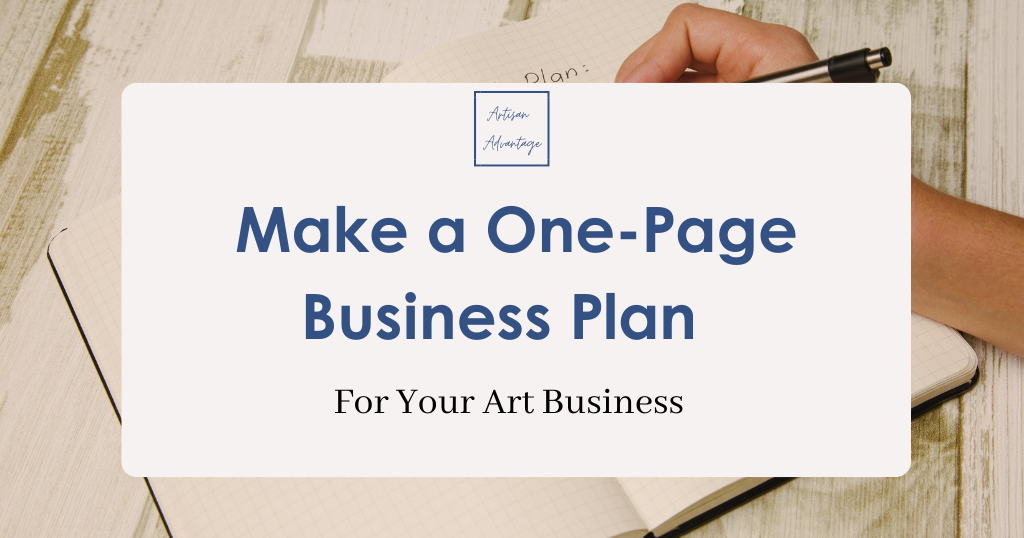 This post contains affiliate links which means I receive a small commission if you make a purchase using the link. For more information, see my full terms here.
This post contains affiliate links which means I receive a small commission if you make a purchase using the link. For more information, see my full terms here.
Here are some things to consider with your one-page plan.
Define Your Vision and Mission
Begin your one-page business plan by clearly defining your vision. Your vision is simply a picture of what you want your business to look like in the future. Make it concise, capturing what you want to accomplish and how you want to impact your audience or the art community. Remember, your vision can change over time. You are not locked into it, but having a starting point helps move you in the right direction.
Identify Your Target Audience
Understanding your target audience is crucial for any business, including art enterprises. Who are the likely people who will purchase your work? This will help you tailor your artistic style, marketing efforts, and communication strategies to resonate with your intended audience.
Artistic Offerings
What is it that you are offering or selling? Highlight what sets you apart from others and articulate the value it brings to your customers. Whether you specialize in paintings, sculptures, digital art, or other mediums, clearly define your artistic offerings.
Competitive Analysis
Conduct a brief analysis of the competitors within your chosen market. Understanding your competition enables you to refine your artistic style and marketing strategies to stand out in a crowded marketplace.
Marketing and Promotion Strategies
Outline your key marketing and promotion strategies on your one-page business plan. Consider online and offline channels, such as social media platforms, art exhibitions, galleries, art fairs, and collaborations with other artists or influencers. How will you get your work in front of people to move your business forward?
Financial Considerations
Even with a condensed business plan, you should include a brief overview of your financial considerations. Identify your art business’s revenue streams, pricing strategies, and anticipated costs or investments. While not exhaustive, this section will provide a basic understanding of the financial landscape of your enterprise.
Milestones and Action Steps
Specify the key milestones and action steps required to achieve your goals. Break down larger objectives into smaller, manageable tasks with realistic timelines. This will help you stay organized and track your progress as you work towards building your art business.
Evaluate and Adapt
Finally, acknowledge the importance of evaluating your progress and adapting your strategies. As an artist and entrepreneur, the art market is dynamic, and trends can change rapidly. Regularly review your one-page business plan, assess your results, and make adjustments to stay relevant and successful.
Providing Guidance and Structure to Your Business
A one-page business plan can be a powerful tool for artists looking to establish and grow their art businesses. By condensing the key elements of a traditional business plan into a single page, you can focus on the essentials while maintaining a clear direction for your artistic journey. Remember, the purpose of this plan is to provide guidance and structure while leaving room for your creative intuition and creativity to thrive. With a concise roadmap, you can confidently navigate the art market and pursue your passion while building a thriving and sustainable art business.
Would you like some direction for your art business? Read about my Art Business Review. where we can work to put a plan together or breathe new life into your creative venture.
Join my email newsletter for weekly art marketing tips, events, and more.
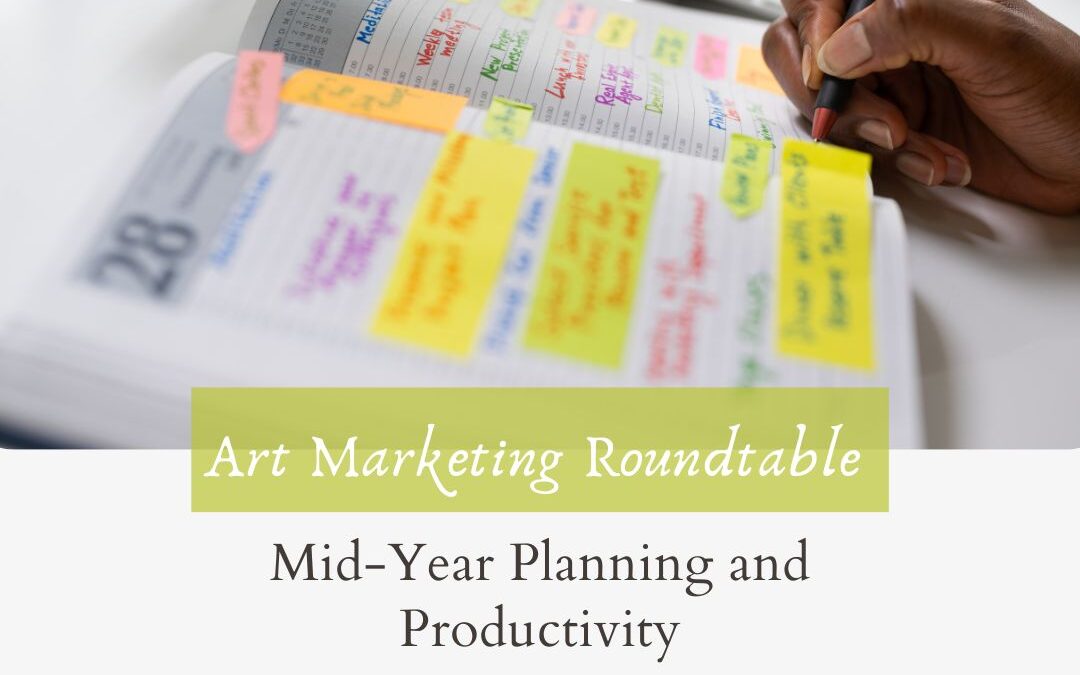
by Rebecca Sciullo | Jun 14, 2023 | Learning, Planning, Productivity, Time Management, Tools
How’s Your Year Going?
Do you plan once for your year and then not look at it again for the rest of the year? If you do, you’re not alone. It’s not uncommon to make solid plans and then get so busy with your work that you don’t check back in to assess how things are going.
Or, do you not have a plan but rather roll with things, creating work and putting it out there on your website or social media, hoping something will happen? Again, you’re not alone. The good news is there is always time to start making a plan.
You may have a plan and want to be more productive and assess how to improve things along the way.
For all three of these scenarios, and everything in between, join an upcoming art marketing round table where we will talk about doing a mid-year review for your art business and sharing productivity and planning tips.
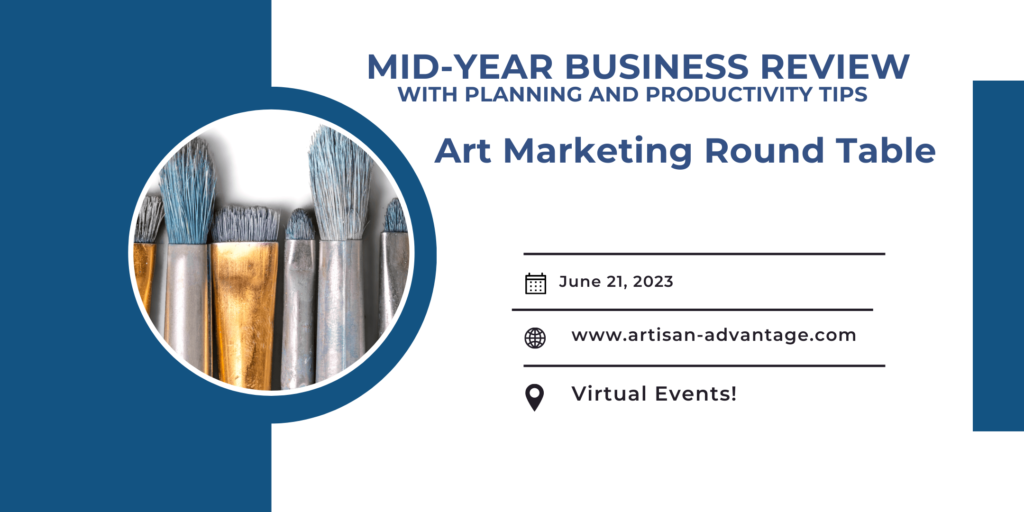
How to do a Mid-Year Review for Your Art Business
Planning is for more than just the beginning of the year. Artists should periodically take stock of how things are going and where they need to adjust their plans. Do this with a mid-year review. And, if you’ve never made a plan for your business, you don’t have to wait for the beginning of the year to start. Instead, learn strategies to get started with art business planning at any stage of the game.
This art marketing round table will focus on a mid-year review of your art business. We will discuss the review process and areas you should consider when going through this process. Discussion points will include assessing your performance, systems, and goals over the past six months. Then, take that information to determine areas of adjustment and improvement for the rest of the year. This comprehensive evaluation will guide your decision-making in growing a vibrant art business. Going through this process will help you to re-evaluate and clarify goals, optimize your practices, and foster a plan for business growth.
We will also discuss productivity and time management techniques.
Art Marketing Round Table: Mid-Year Planning – Wednesday, June 21, 2023
3:00 pm EST/12:00 pm Pacific
https://www.eventbrite.com/e/640713139247
Free Event to Help Your Art Business
This event is free, but space is limited.
For more information about upcoming round tables and other resources to help with your art marketing, please join my email newsletter.

by Becky Sciullo | Dec 1, 2021 | Planning, Productivity
It’s December 1st! Make this last month of the year count.
Year-end reviews and planning for next year are always a hot topic this time of year, and I encourage you to do that.
In addition to a year-end review and planning for the next year, there is one critical activity I’ve got in the habit of doing every year. This activty ensures that I hit the ground running in January. It also helps me stay on track during a month typically filled with holiday events, parties, and travel. I like to refer to it as a “home-stretch” plan.

What does this “home stretch” plan entail?
As the year is coming to a close, a home stretch plan is simply a quick list of things that I would like to accomplish before the end of the year. I consider outstanding projects that I would like to wrap up. Then, I think about things I would like to have in place when I hit the ground running in January.
Before Thanksgiving, I sat down to figure out my “home stretch plan” and came up with the following priorities for the next four weeks. Some of the things on my plan included:
Make health a priority with healthy eating and exercise, mindful of the many opportunities coming up to indulge.
Helping my daughter tie up some loose ends regarding her post-graduate plans after high school.
Finish a product that I’ve been working on for too long now. It’s time to get it done.
Finally, make headway with or possibly (but realize it might not be realistic) complete my new website.
Keep it Simple
I like to keep it simple. Yes, I have holiday planning and other things to do, but these are the four things that I am focusing on going into the New Year. I use it as a reference to make sure I make time count during this busy month.
It doesn’t take long to do. Give some thought to your “home stretch plan” today so you can make these next four weeks count and hit the ground running in January. Leave yourself plenty of room for rest, relaxation, and holiday cheer, but help yourself get a leg up so you will feel ahead of the game on New Years Day.
Photo by Miguel A. Amutio on Unsplash
by Becky Sciullo | Mar 29, 2021 | Learning, Planning, Social Media
Here are some marketing ideas for your Monday morning.
 Seven Art Marketing Ideas
Seven Art Marketing Ideas
1 – Consider an off-holiday flash sale for your work. Flash sales work great for impulse buys and to increase sales during slower times of the year. Choose a short time period, announce your flash sale on your site, and then through marketing channels such as your email list. You can select a specific body of work and even target a select group of clients for the sale. I ran a flash sale for Robert Yonke a few years ago, and we were able to sell some work that had previously not attracted much interest. Don’t sell inferior work that is not up to your usual quality, but instead, offer older work that you’d like to find a home for or a special series created just for the flash sale. If you don’t like the term flash sale, call it a limited-time-only sale.
2 – When strategizing about media outlets to send press releases, consider publications produced by vendors you use. Do you only use a particular company for a unique tool or material? Do they have a blog or email newsletter? Pitch them for a feature story about you and your work.
3 – Gain exposure for your work by submitting an article for consideration to art magazine websites like Ladder and Key.
4 – People are searching for local businesses. Build out your Google Business profile.
5 – It’s almost April 1st and the start of a new quarter. When planning for your business, I like to use rolling quarters—no better time to start than now.
6 – If you use Instagram to market your art, make your account public so users can see your profile and content.
7 – When using Facebook to promote your art, set up a separate business page from your personal profile. Then, claim or create a recognizable URL, like www.facebook.com/artisanadvantage, rather than the randomly assigned numbers Facebook will assign you.
Get More Art Marketing Help
Would you like weekly updates with information like this to help your art business? Sign up for my mailing list here.

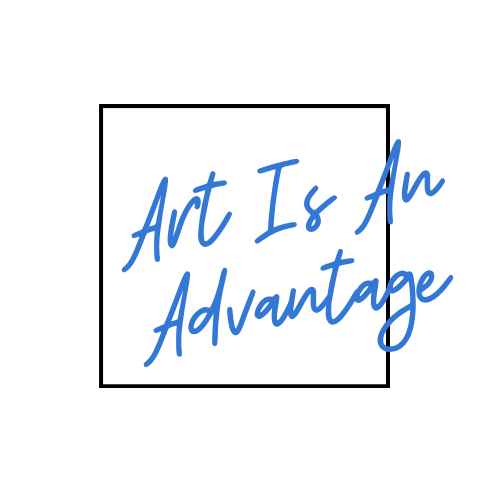


 This post contains affiliate links which means I receive a small commission if you make a purchase using the link. For more information, see my full
This post contains affiliate links which means I receive a small commission if you make a purchase using the link. For more information, see my full 




